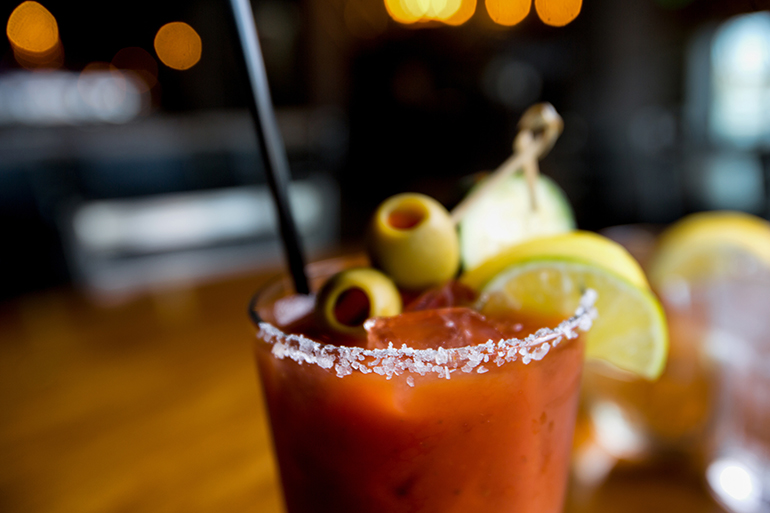Enjoy Happy Accidents of the Culinary World on the East End

Do you know that Champagne was made by mistake? How about that gazpacho was a quick fix for hungry soldiers? Check out these unlikely origin stories for some of your favorite foods.
During the summer months, gazpacho is a common menu item but delicious nonetheless. It is not terribly difficult to imagine why gazpacho is popular in the hotter months. Necessity, the mother of invention, is not known for subtlety. If it’s too hot for soup…have cold soup. However, the story of gazpacho’s invention goes a bit beyond temperature. The dish was originally intended as a way to make use of stale bread, which was ground up to serve as a thickening agent. Roman soldiers were known to carry stale bread, garlic and vinegar with them to create an early version of the chilled soup.
However, the Andalusian region of Spain is credited with popularizing gazpacho. Originally, the dish consisted of stale bread, olive oil, garlic and water or vinegar ground to a liquid with a mortar and pestle. If available, almonds or vegetables were included in the blend. Today, it has become typical to include tomatoes and bell peppers, though watermelon and mango make frequent appearances. The inclusion of stale bread, even bread crumbs or croutons is losing popularity in today’s gazpachos. Many chefs opt for avocado as a flavor-neutral and gluten-free thickening agent. The Yellow Cab Tomato Gazpacho at American Beech in Greenport does just that, and comes topped with avocado, radish and lobster.
The current version of the Bloody Mary was created in 1934 at the St. Regis Hotel’s King Cole Bar. Though the original iteration of the beverage was invented in France and then perfected for the United States, the drink has English roots. It is believed that Fernand Petiot named the drink for Mary I, known to Protestants of the time as Bloody Mary. She earned the nickname for having nearly 300 subjects who refused to recant their allegiance to the Church of England burnt at the stake.
Fascinating as its etymology was, Petiot’s clientele in New York did not find the vodka and tomato juice cocktail as appetizing as their Parisian counterparts, and complained it was bland. Petiot appeased them by adding lemon, cayenne, Tabasco, black pepper and, most importantly, Worcestershire sauce. Worcestershire gives Bloody Marys their savory umami flavor. The fermented condiment was first invented by English chemists John Wheeley Lea and William Perrins, in an attempt to replicate a recipe brought back to England by the Governor of Bengal. After several months of fermentation, the chemists tasted the mix and found it was delicious. You can enjoy a classic Bloody Mary at Billy’s By the Bay in Greenport, whose “Crabby Mary” is topped not just with olives, but an entire fried soft shell crab.
Ice cream cones were also made as an inexpensive idea. The cone started as a wafer cookie bowl crafted by Syrian concessioner Ernest Hamwi during the 1904 World’s Fair. The ice cream cone has changed and evolved since then, but at the time it was revolutionary. Find some unique cones at Shock Ice Cream in Westhampton Beach, whose cones come adorned with anything from cotton candy to googly eyes.
For those who prefer a liquid dessert, Pierre’s in Bridgehampton is worth a visit. They offer 20 different types of sparkling wine by the bottle. As you sip, consider that your drink was invented by mistake. Before the region of Champagne was known for their sparkling wine, it was an underdog wine region trying to compete with Burgundy. The winters in Champagne were far colder, and would cause barrels in underground cellars to stop fermenting prematurely. By the time the weather became warm again, the wine would already be in bottles. The change in temperature would awaken the dormant yeast cells, and fermentation would begin again, releasing carbon dioxide in the process. The weaker bottles shattered from the pressure of this gas. Those that survived made the region famous.



